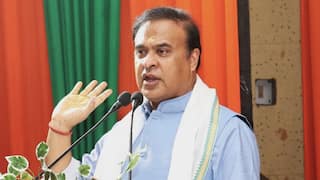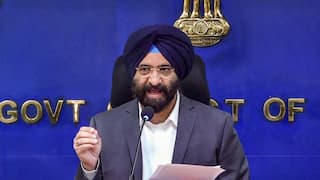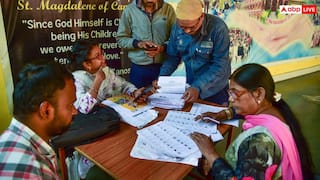COP29: IRENA Highlights Urgent Need To Reduce CO2 Levels By 2050 During UN Climate Conference
IRENA shows that current country pledges could cut global energy-related CO2 emissions by three per cent by 2030 and 51 per cent by 2050.

Baku: Even if all COP announcements to date were to be fully implemented, a significant CO2 emission gap would still need to be closed by 2050, according to IRENA’s World Energy Transitions Outlook 2024.
Released at the opening of the two-week UN Climate Conference COP29 in Baku in Azerbaijan on Monday, the agency’s 1.5-degree Celsius scenario outlines a net-zero path by mid-century, offering a framework for governments to develop energy transition strategies that better align energy planning with climate policies to channel investment.
The Outlook shows that current country pledges could cut global energy-related CO2 emissions by three per cent by 2030 and 51 per cent by 2050. Achieving the global goals of tripling renewable power capacity and doubling energy efficiency by 2030, as agreed at COP28, would keep the energy transition on track for net-zero emissions by 2050.
These 2030 targets are crucial to limiting global temperature rise to below 1.5 degrees, as underscored by the UAE Consensus.
However, a significant gap remains between political announcements and actual county plans and policies. National plans and targets are set to deliver only half of the required growth in renewable power by 2030.
Investments in renewable power, grids and flexibility, energy efficiency and conservation must increase dramatically to meet the renewable energy and efficiency goals, totalling $31.5 trillion from 2024-2030.
There are also large geographical disparities in terms of renewable additions and investments, causing inequalities in the global energy transition. While renewable investment has generally been on the rise, it remains concentrated in a few countries, leaving much of the Global South behind.
Moreover, with over 70 per cent energy supply, fossil fuels continue to dominate the energy mix in several of the biggest economies, the world’s largest CO2 emitters. To meet the 1.5-degree target, the G20 must triple its installed renewable power capacity by 2030, reaching 9,400 gigawatts (GW), and expand it seven-fold by 2050 to 24,900 GW, compared to 2023 levels.
Francesco La Camera, the Director-General of IRENA, said: “We have reached crunch time. A robust global finance deal and the next NDCs in 2025 are ‘make-or-break’ moments to keep 1.5 degrees alive. NDCs 3.0 provide the last opportunity this decade for countries to step up their stated ambitions. Particularly, an agreement on a new quantified goal for climate finance at COP29 is critical to ensure a just transition, support investments in the Global South and empower countries to step up their NDC ambitions. 1.5 degrees hinges on efforts by G20 countries. Their NDCs must match global commitments to triple renewable power capacity and double energy efficiency by 2030.”
Under IRENA’s 1.5-degree scenario, renewable energy sources would provide the bulk of the power mix, accounting for 68 per cent and 91 per cent of the total electricity supply by 2030 and 2050, respectively.
By 2050, a deep transformation of the power and end-use sectors is required to enable the high shares of renewable energy required by the transition.
Following another year of extreme weather events and record-breaking heatwaves, UN Environment Programme’s 2024 Emissions Gap and Adaptation Gap Reports showed slow progress on emissions reduction and adaptation planning and finance.
Nations must deliver dramatically stronger ambition and action in the next round of Nationally Determined Contributions (NDCs) and dramatically increase climate adaptation efforts, starting with a commitment to act on finance at COP29.
COP29 from November 11 to 22 presents a pivotal opportunity to accelerate action to tackle the climate crisis, as it brings together leaders from governments, business, and civil society to advance concrete solutions to one of the defining issues of our time.
A key focus of COP29 will be finance, as trillions of dollars are required for countries to drastically reduce greenhouse gas emissions and protect lives and livelihoods from the worsening impacts of climate change.
The conference will also be a key moment for countries to present their updated national climate action plans under the Paris agreement, which are due by early 2025.
If done right, these plans will limit global warming to 1.5 degrees above pre-industrial levels and double as investment plans advancing the Sustainable Development Goals.
(This report has been published as part of an auto-generated syndicate wire feed. Apart from the headline, no editing has been done in the copy by ABP Live.)






































